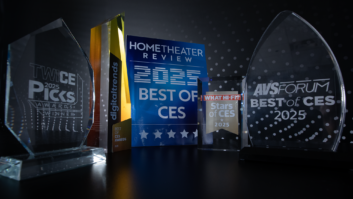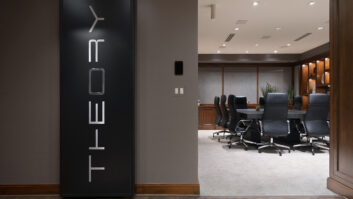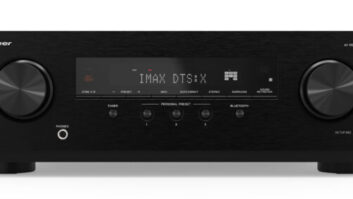NEW YORK — When SMS Audio, a headphones manufacturer founded by rapper Curtis “50 Cent” Jackson, first came to town in 2011, it was easy to categorize the company as just another Beats Electronics wannabe. The headphones space was continuously welcoming celebrity-branded products, with the mugs of such stars as Justin Bieber, Ludacris, Lady Gaga and Snooki from “The Jersey Shore” (remember her?).
But to dismiss SMS as just another celebrity pet project would be a mistake. The company has slowly but steadily been paving its own road, whether distinguishing itself through the use of Kleer audio technology for its wireless headphones (it has since switched to Bluetooth as the transmission quality has improved) or through strategic partnerships with Lucasfilms and Disney for Star Wars-licensed models.
Over the summer, SMS lifted the veil on yet another partnership, this time with Intel for biometric headphones, marking its entry into the wearables space. Brian Nohe, SMS Audio president and partner, spoke with TWICE last month to discuss audio trends and what the company has up its sleeve for the future. What follows is an edited conversation with the exec.
TWICE: Let’s start with SMS’s recent news of its Intel partnership. Can you detail the thinking that led up to this decision?
Nohe: We had felt for a long time as we read the consumer data out there that focusing on sport product was an interesting way forward in addition to our regular line of products. And we didn’t think anyone had done that quite the way we thought it should be done. So we launched our sport products at International CES in January. Then, at the same time, Intel had been talking a lot about wearables and the technology they could bring to bear across a variety of products.
So we got together, and they had created a new department that was focused on wearables and new technology, and they were looking for a group to partner with that was quick and nimble. That’s how it came to bear. They were looking for a good partner to work with, and we knew we wanted to expand our sport line and wanted to do it well, and it’s been a great partnership since.
TWICE: Do you think consumers view headphones as being a wearable?
Nohe: I think consumers want products that work well. Some consumers understand headphones are here to stay much like iPads and smartphones in general. This is now a consumer product that is not only fashionable and not only just provides terrific listening experience, but it can also be part of their everyday routine as they interface with this variety of products.
For example, I believe you will see headphone manufacturers start looking at things like motorcycle helmets. They’re basically the same sort of idea — plastic or metal surrounding your head, giving you data. Wearables of all varieties will start to leak into the culture that this headphone product or whatever you’re wearing on your head or attaching to your smart product can deliver unique information. A motorcycle helmet might deliver the speed or fuel consumption.
As long as you’re providing [data] accurately and intelligently, consumers will adopt it pretty easily. The advantage with headphones is that the optical sensor in the ear is one of most accurate places that you can put this sensor to measure heart rate. So it will be extraordinarily accurate and eliminate a brick strapped around your chest, which is currently way consumers are monitoring heart rates. And it happens to be bundled with a product that’s exceptionally well designed and produced with brilliantly good sound quality. I think consumers are adopting this, and I think manufacturers as seeing how this will evolve over next few years into all sorts of products that are in and around this space.
TWICE: SMS isn’t the first audio company you’ve helmed. You started KoNo Enterprises, which was acquired by SMS Audio in September 2011. What drew you to the headphones space?
Nohe: I was in the consumer product [space] in my previous life. I was with Gillette for over 20 years and held a variety of general management positions. I ran another company after I retired from Gillette and then retired again and was looking for small companies to invest in myself. Out of that came the idea to put little jewels on ear buds, and that became KoNo Audio.
We were very successful with doing work for companies like Pottery Barn and Disney, and, at the time, 50 was looking for someone who had an infrastructure in place to market his product that he was developing. We were introduced and hit it off. He acquired my company and acted as general manager of the company from here on out.
We brought in Tim Mosley (Timbaland), who gave us credibility on production side of music. We brought in Carmelo Anthony, who gives us credibility in sports, and as we go from market to market, we will look for other investor endorsers in markets that make sense for us. You might see a different face on a product in China than you do in Brazil and that you do in the U.S.
But we haven’t tried to duplicate. We’ve tried to focus it more, tried the quality of people speak for the product directly, which they have done aggressively for us. People like to compare us to Beats, and in some ways that’s very flattering to be compared to Beats. They did a wonderful job of developing a company, but we’re not trying to duplicate. We have our own vision and strategy, and we will win it in our time and our own way.
TWICE: Now that you bring up Beats, how do you think the Apple/Beats deal with affect the headphones industry for consumers?
Nohe: It certainly brings more attention to the ecosystem as a whole. Telecommunications providers, smart device providers, headphone providers, streaming providers — that’s the ecosystem that consumers are now living with, so they’re starting to see all these things that are tied together. And I think you’ll start to see in the industry consolidation much like Beats has done and Apple has done. And I think that’s a very good thing.
I applauded what Beats did when they acquired [music service] MOG, and I applaud Apple for acquiring Beats. Like every big company, you have to watch out for ego and hubris … but they seem to have done it well at this time.
Nobody asks if there’s room in the market for Coca- Cola and Pepsi, or Gillette and Schick, or Kellogg and Post. Is there enough room in the market? Absolutely.
I think there’s going to be room for all sort of different places in his category. There’s always going to be room for high-end audiophiles like B&O or Grado. I think some companies you will see try to find a way to talk to consumers through this ecosystem. I think you’ll see more happening with the top players in that area. That’s what I’d be looking out for in the industry —how do you tie those things together?
TWICE: Speaking of high-end audio, what role do you think high-resolution audio will play for headphones? Is this a segment you’re seeing consumers clamor for?
Nohe: I like products that are priced well for the mass consumer market place. I think there’s a place for high-end audio, if someone wants to spend $2,000 on a headphone, God love them. I don’t know there are many of them, and although that’s an interesting business, it’s not one we’re in.
TWICE: What do you think the sweet spot is for headphones pricing?
Nohe: I think sweet spot is $150 to $200. If people really understood what it took to manufacture, research, develop, design, market, ship around the world, invest in human beings, they would realize that’s a pretty good price point for these products. Some people say, “But I listen to music on $19 ear buds.” Well, you can, but I’m not sure those stand up to $150 to $200 range … I think consumers are getting it — these $150 to $200 are really good, and that’s the price point they’re comfortable with.













